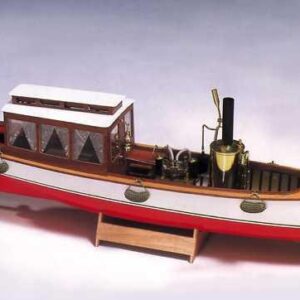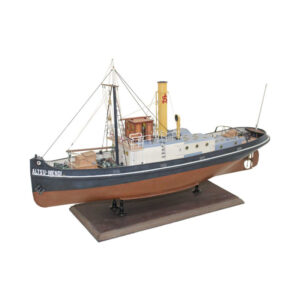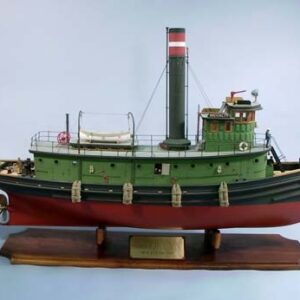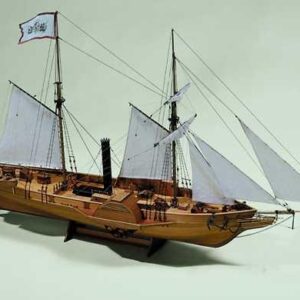Steam Powered Ships
The age of steam powered ships was a revolutionary time in maritime history, marking the transition from traditional sailing vessels to technologically advanced steam-powered ships. This era began in the early 19th century with the invention of the steam engine by James Watt, which was soon adapted for use in ships by engineers such as Robert Fulton and Henry Bell.
One of the most famous steam ships of this era was the SS Great Britain, designed by Isambard Kingdom Brunel and launched in 1843. This massive ship was the first iron-hulled, propeller-driven steamship, setting a new standard for size and speed. It was also the first ship to make regular transatlantic crossings, revolutionizing the world of transoceanic travel. More about steamships below.
- Out of Stock
- Read more
- $550.85
Alte Liebe Harbor Tug (RC) – Caldercraft
- Out of Stock
- Read more
- $214.95
Altsu Mendi – Disar
- Add to cart
- $576.00
Anteo – Mantua
- Add to cart
- $495.00
Brooklyn Tug- Dumas
- Add to cart
- $1,149.00
Chiba Star – Saito
- Out of Stock
- Read more
- $589.00
Christiaan Brunings – Dean’s Marine
- Out of Stock
- Read more
- $65.00
CSS David Torpedo Boat – Flagship Models
- Out of Stock
- Read more
- $299.99
Empire Susan – Dean’s Marine
- Out of Stock
- Read more
- $325.00
Gulnara Paddlewheel Steamer – Krick
Another notable steam ship was the RMS Titanic, which tragically sank on its maiden voyage in 1912. Despite its tragic end, the Titanic was a marvel of engineering and luxury, featuring advanced features such as a double-bottomed hull and electric lighting.
The first steam ship to successfully cross the Atlantic Ocean was the SS Savannah, which made the journey in 1819. This marked a significant milestone in maritime history, as it proved the viability of steam-powered ships for long distance travel.
The last steam powered ship to be built was the SS United States, launched in 1952. This ship was the fastest ocean liner of its time, and its advanced design and powerful engines allowed it to break the record for the fastest transatlantic crossing on its maiden voyage. However, with the rise of more efficient diesel engines, the era of steam powered ships came to an end.
The age of steam ships also saw some famous battles, such as the Battle of Hampton Roads in 1862. This battle between the Union’s USS Monitor and the Confederacy’s CSS Virginia marked the first time two ironclad ships engaged in combat, forever changing naval warfare.
Advancements in steam technology during this era also led to the development of more specialized ships, such as the paddlewheeler, which became popular for river travel and transport. Steam powered ships also played a crucial role in the colonization and trade of many countries, making global travel and commerce more efficient and accessible.
In conclusion, the age of steam powered ships was a pivotal time in maritime history, marked by the development of groundbreaking technologies and the construction of iconic ships. These ships not only transformed the world of transportation and warfare, but also paved the way for further advancements in the field of maritime engineering. The legacy of these steam powered ships continues to be felt in modern times, showcasing the enduring impact of this era on the world of shipbuilding and navigation.












